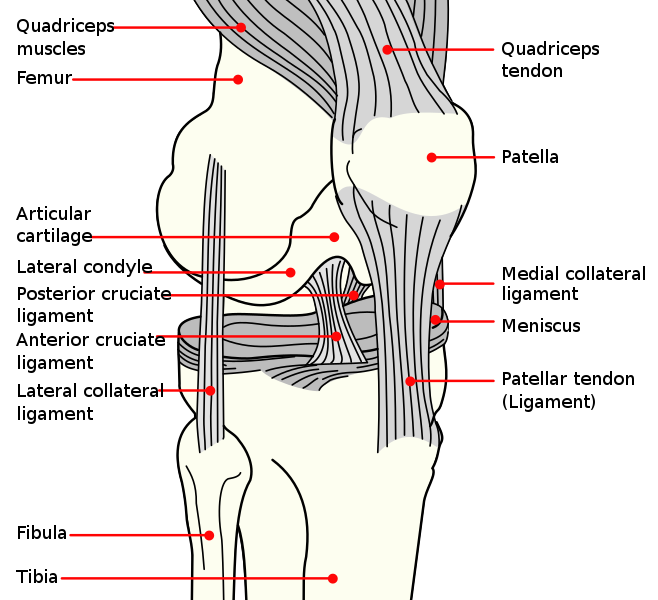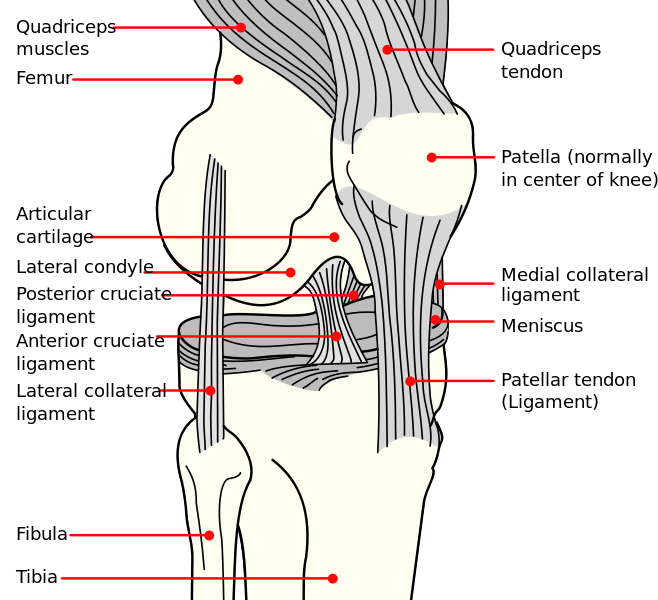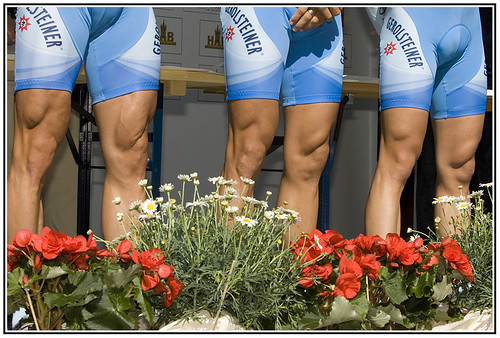This is a continuing series on knee injuries, highlighting the most common and introducing you to the best treatment options; check out Part I.
Knee pain mostly affects athletes, but really it can hit anyone for a number of reasons. However it happened, you’ll want to know what’s ailing you so that you can properly treat the injury. Here’s a list of the most commonly injured parts of the knee. Below you’ll find some basic info on diagnosing common knee injuries and some knee strengthening exercises

MCL
The Medial Collateral Ligament is one of the four major ligaments in the knee that is usually injured when someone gets a direct hit, kick or strike to the outside part of the knee. Soccer or American football see these sorts of injuries the most.
There’s of course also the option of reducing the possibility these injuries might happen by strengthening the ligament ahead of time. Check out these suggestions on doing that:
PCL
The posterior cruciate ligament is also at the center of the knee like the ACL, aiding in the bending of the knee at the patella. Tearing the PCL is tough because of the amount of force and virtually direct hit it requires to rip it. Many docs even call it a “dashboard injury” because it comes up the most in car accidents where a driver is propelled forward and the knee impacts the under portion of the car’s dashboard.
PCL pain presents itself a lot like ACL injuries (worth checking out with your doctor either way). But a PCL tear might make you feel like your knee could give out unpredictably, as if you’ll never know when it might cave in on you. A doctor can tell if it’s specifically a PCL problem by bending your knee then sliding it backwards; if it slides too far back, the ligament is clearly not doing it’s job. For low-degree injuries, it’s pretty universal to go into physical therapy. A study by the Cleveland Clinic found remarkable improvement over the course of several years:
At followup, 80% of the patients were satisfied with their knees and 84% had returned to their previous sport (68% at the same level of performance, 16% at a decreased level of performance).
There’s discussion about the effectiveness of surgery in worse cases, but many docs virtually swear by it. For strengthening exercises ahead of injury, here’s a vid with some suggestions:
Quadriceps Tendon
We’d think bicyclers would be the common sufferers here, but don’t confuse soreness with tears. Consider the heavy impact of a basketball player with a semi-bent knee, stomping hard into the floor boards. That sort of basketball scenario illustrates the amount of pressure it takes to tear the quad tendon. Bruising, cramping and a popping feeling accompany these sort of injuries.
Besides the physical therapy and surgical options, initial treatment probably will require rest: tons and tons of rest. An immobilizer – a heavy duty knee brace – will stabilize the knee, let the area heal up a bit, and keep you on your glutes for anywhere from 3 to 6 weeks. This video gives you a very quick first option for a safe, recooperating stretch for quad injuries:
As always, don’t go self-diagnosing your knee injury. It won’t be immediately obvious what’s the best approach for fixing your way too bent-out-of-shape knee.





